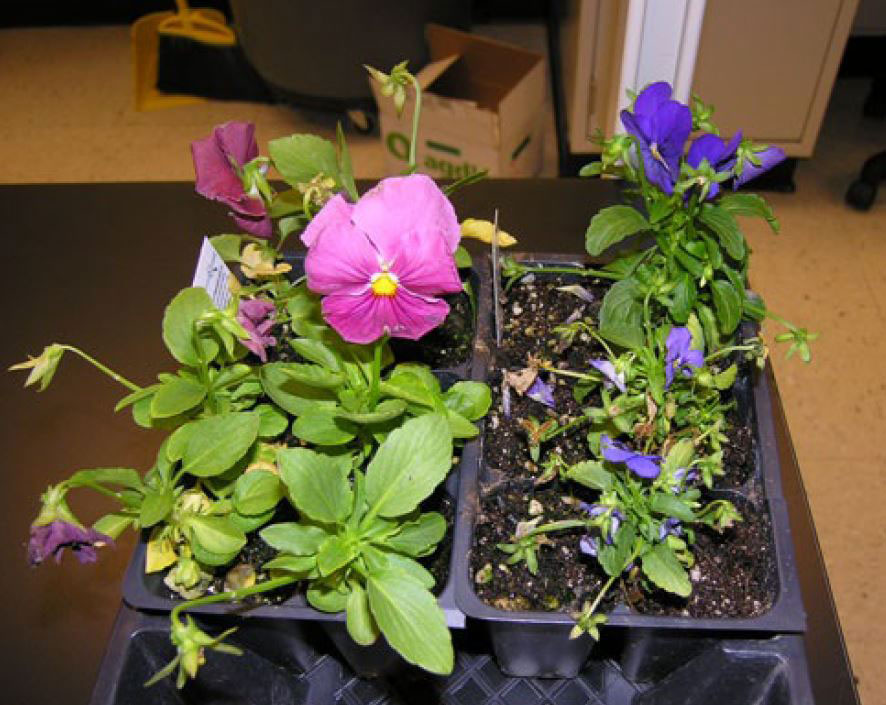Pansy Black Root Rot
Contact
Plant Diagnostician
Phone: (479) 575-2727
Email: ssmith@uada.edu
Jason Pavel
Diagnostician
Phone: (479) 575-7257
Email: jpavel@uada.edu
University of Arkansas System Division of Agriculture
Cralley Warren Building
Room 16
2601 N. Young Ave.
Fayetteville, AR 72704
Pansy Black Root Rot
Plant Health Clinic Disease Note Issue 35
Sherrie Smith and Jason Pavel

It is pansy season and who doesn’t love the cheerful faces and delightful scent of pansies. Black Root Rot, caused by the fungus Berkeleyomyces basicola, formerly Thielaviopsis basicola, is a common and serious disease of many crops including field crops and ornamentals. Cotton, soybean, peanut, begonia, fuchsia, cyclamen, geranium, gerbera, gloxinia, holly, pansy, petunia, phlox, poinsettia, sweet pea, verbena, and violets are some of the crops commonly infected.
What are the symptoms of black root rot?
Thielaviopsis basicola is a soil-borne pathogen that can survive in the soil for many years because the fungus forms thick-walled survival spores called chlamydospores. Above-ground symptoms are stunting, wilting, yellowing, and plant death. When roots are examined, they have small black flecks containing the chlamydospores. When infection is severe, the entire root may look black.
How do I prevent black root rot?

Sanitation in the greenhouse is essential for control of Black Root Rot. Soil and pots should not be re-used. Monthly drenches of fungicides such as Insignia, Alude, and Compass are helpful in control if the disease is not too severe. The best control for homeowners is strict sanitation.
Take Aways:
• Do not reuse soil and pots.
• Do not re-plant in the ground where disease was previously confirmed.
Follow us on Facebook!
This work is supported by the Crop Protection and Pest Management Program [grant no. 2017-70006- 27279/project accession no. 1013890] from the USDA National Institute of Food and Agriculture.